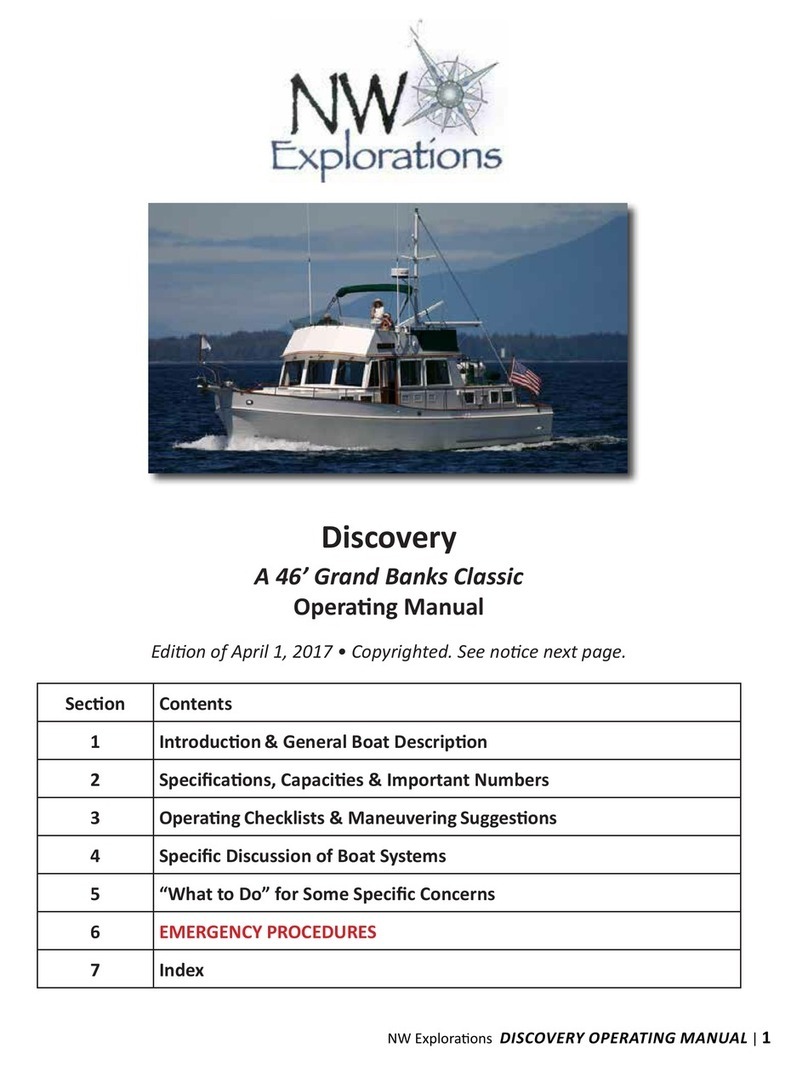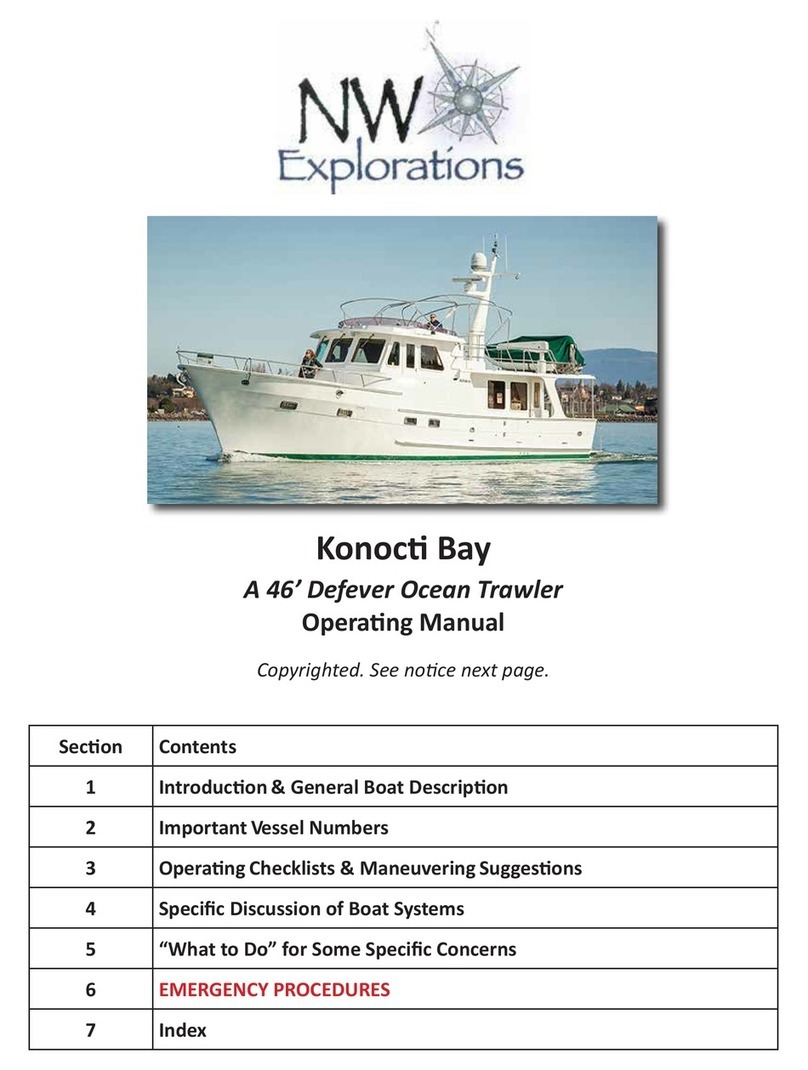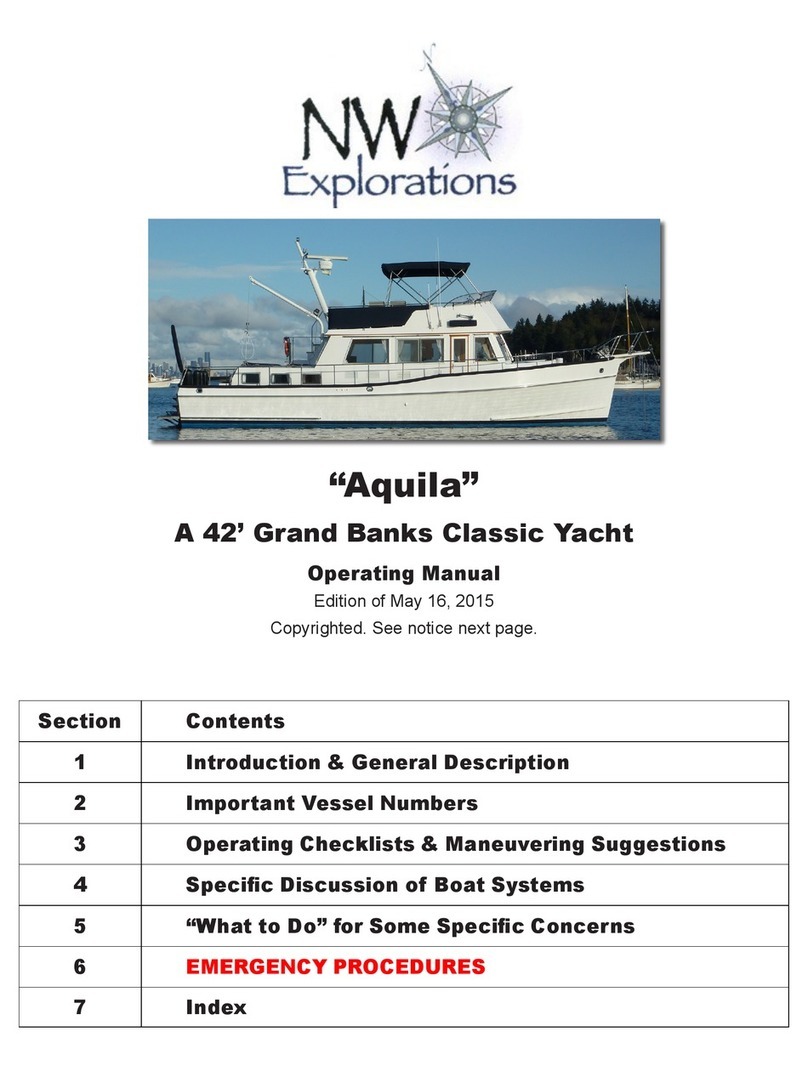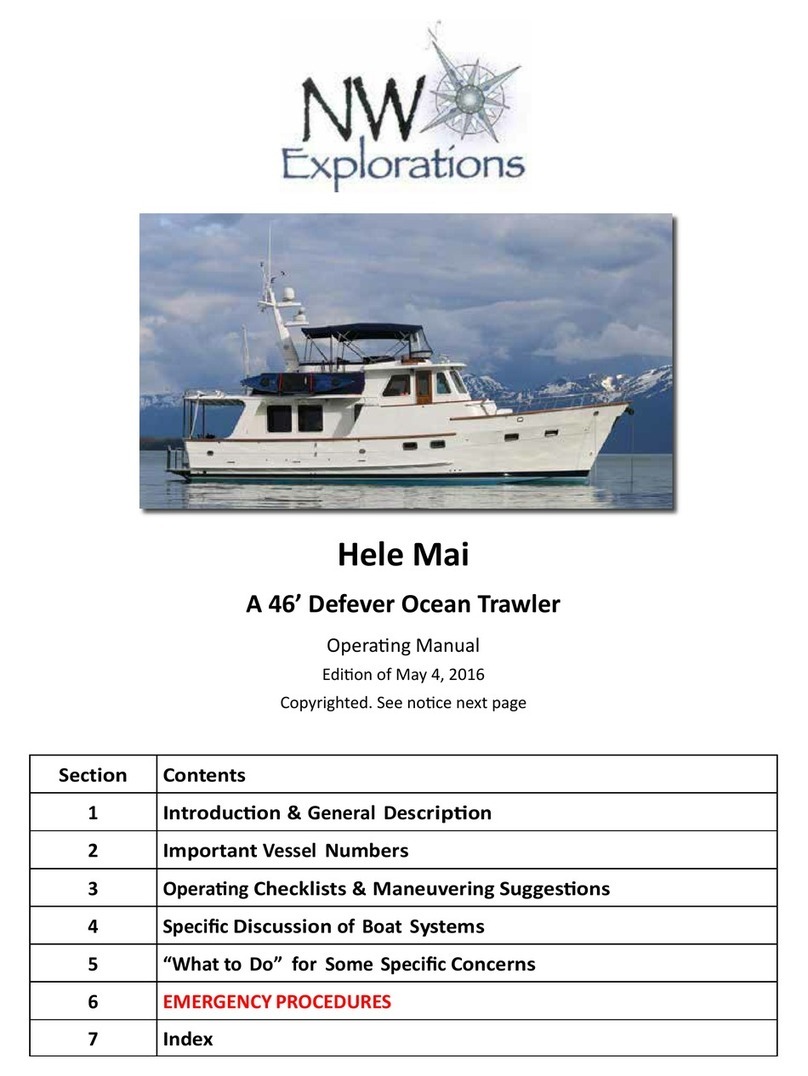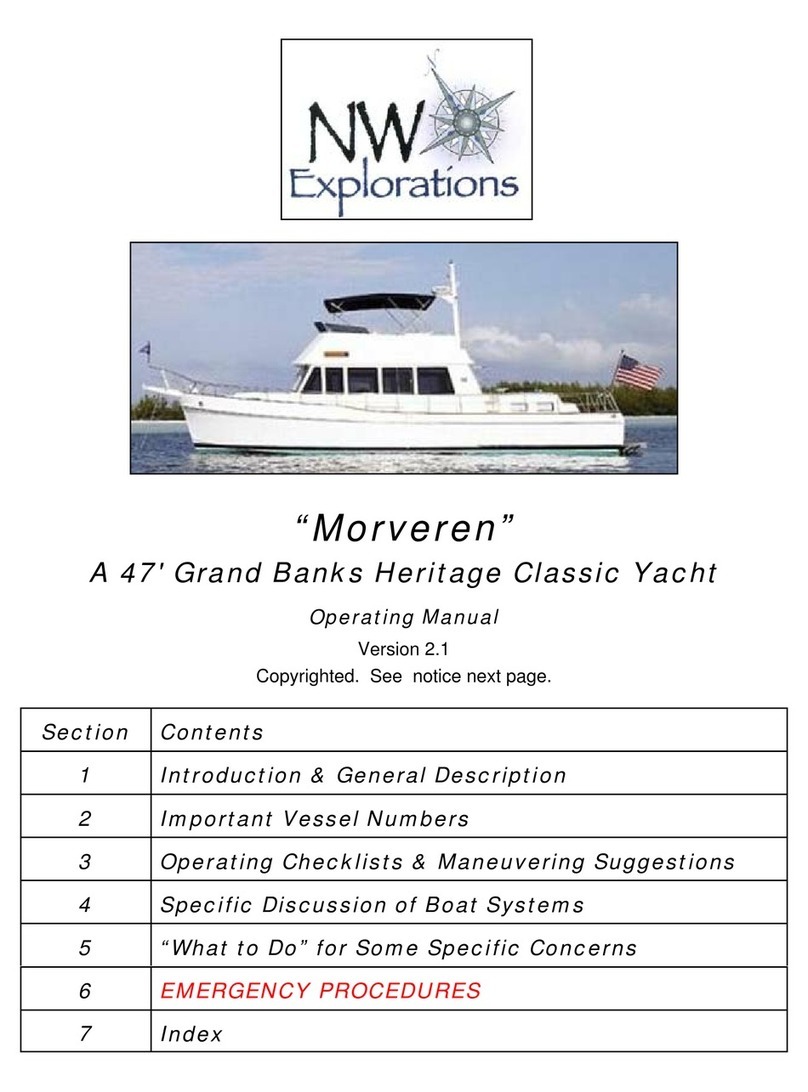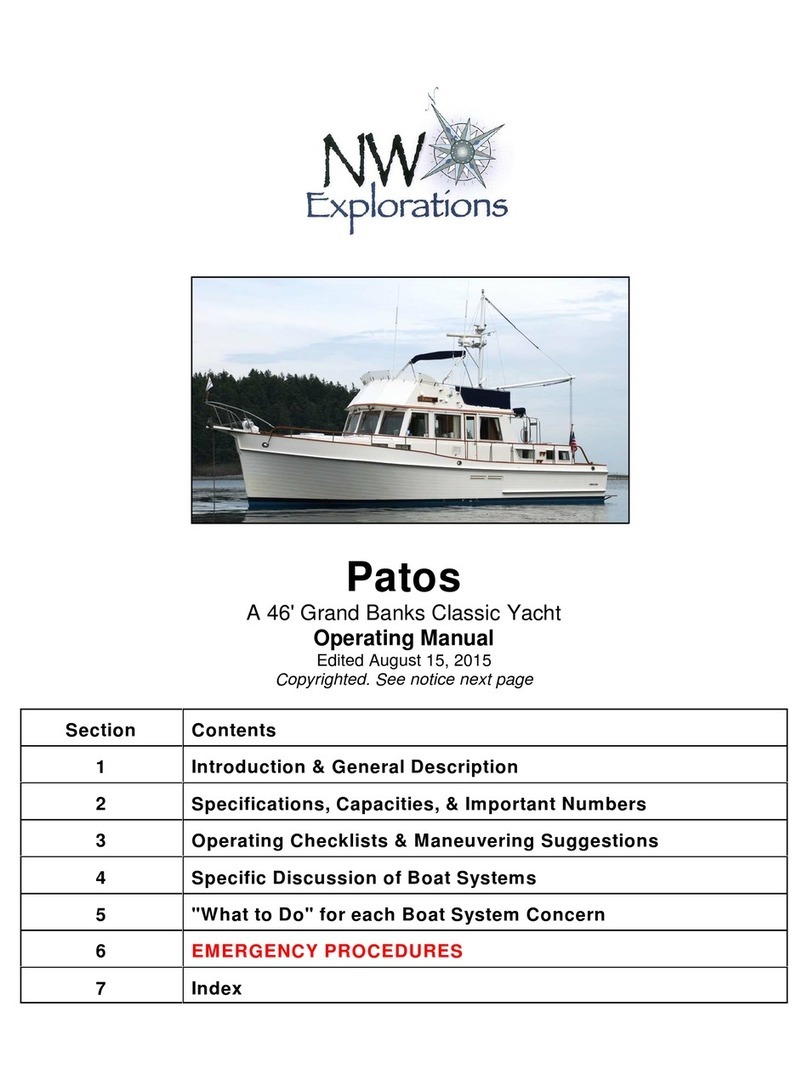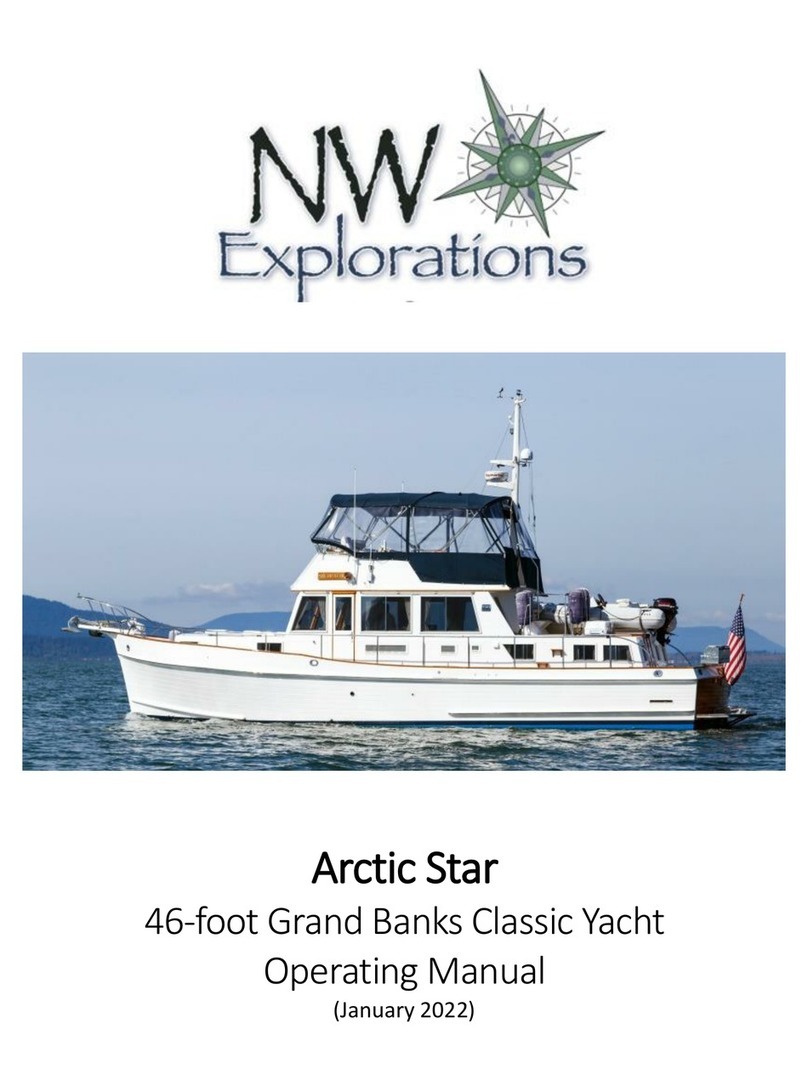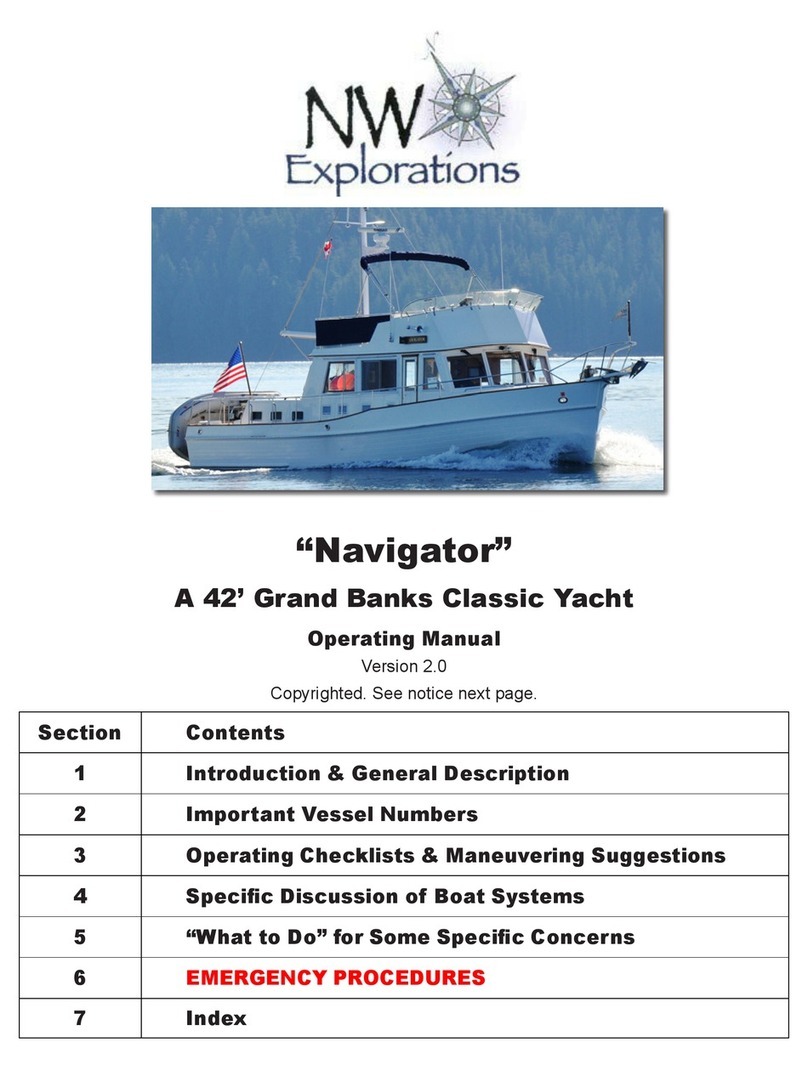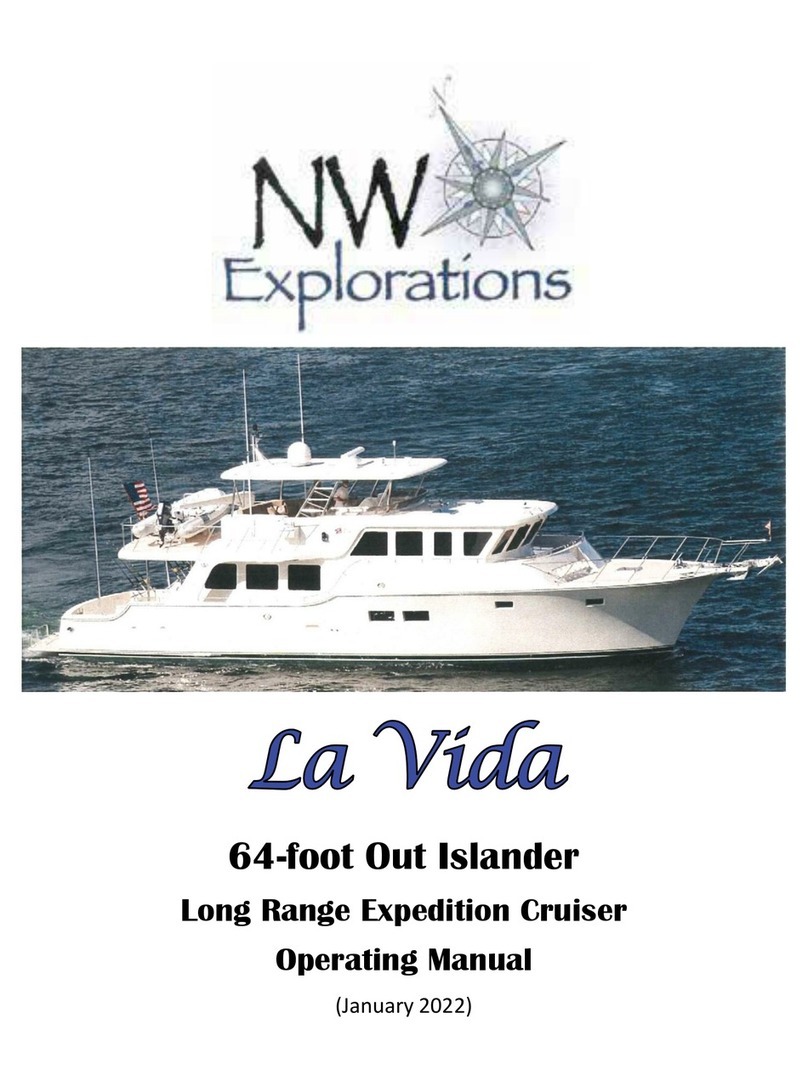
4 | GREY LADY OPERATING MANUAL NW Exploraons
Sabre 38’ Salon Express General Descripon
Exterior
The Sabre 38’ Salon Express is a tradional “down east” design. The boat
is built in the tradion of Maine boat building. She is elegant, strong,
steady reliable and seaworthy. She has the latest technology including the
pod propulsion drive train.
A roomy cockpit secon with a storage lazaree is especially useful for
shing and for handling the dinghy aer it is launched from its davit. It is
only 5” lower than the main salon. With the drop down window and swing
door the two social spaces are connected.
The side decks are very safe with a high stainless steel rail and stanons.
On the starboard side outside the helm window is the Type IV
USCG throw able device with 75’ lanyard. The deck ngs for
water (port), waste (starboard) and diesel (port and starboard)
are located on the side decks.
Note that the water, holding tank & the diesel deck plates are
close! Be sure to use the correct one...
Forward on the bow deck is the anchor windlass with foot
switches allowing chain movement both “up” and “down”
electrically. The anchor retracts into the pulpit which
hangs out over the bow to give beer chain clearance
from the hull than otherwise possible; this pulpit is strong
and braced, easily supporng not only the anchor during
hauling but also an aending crew member if necessary.
Aer passing over the winch, the chain goes below decks via a hawse pipe
in the foredeck. Also on the foredeck in the locker (starboard) is the salt
water wash-down faucet.
The stern shore power receptacles are the only receptacles for shore
power. Please stow cord and splier when underway. Shore power switch
should be o when plugging and unplugging shore power cord. This
prevents arcing and damaging the prongs and receptacles.
The windlass and foot pedals for up and down
funcons. The salt water wash-down faucet
and hose are in the starboard anchor locker
The three way splier plugs in to both
30 amp receptacles.
Port entry door onto swim step
